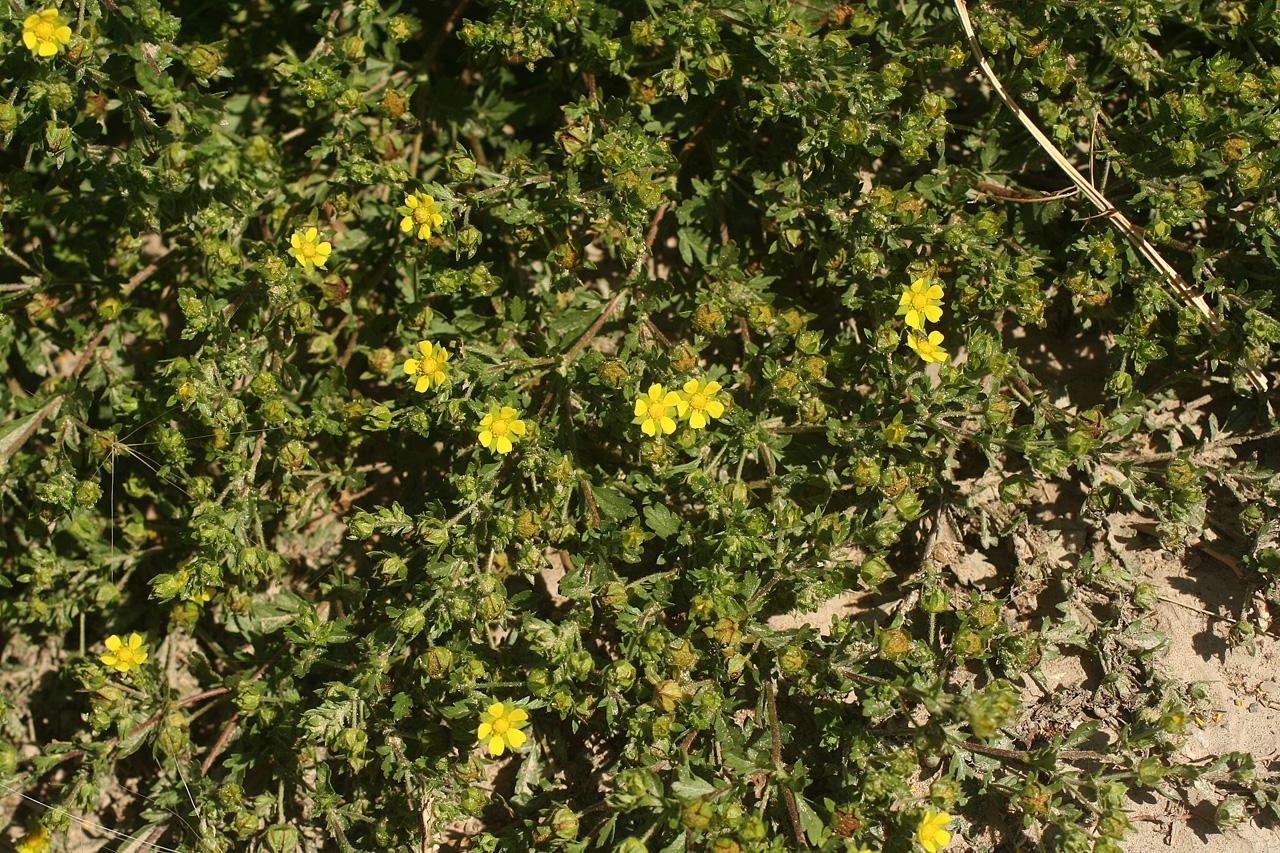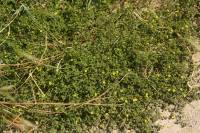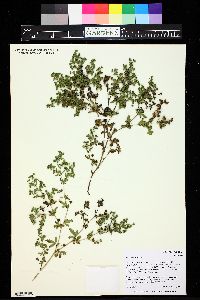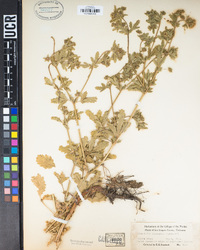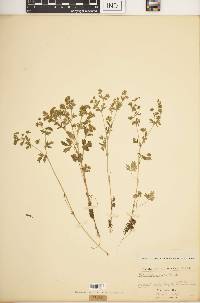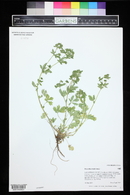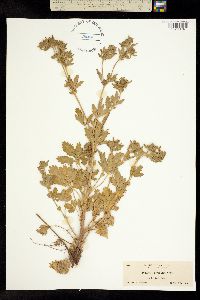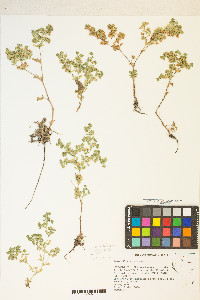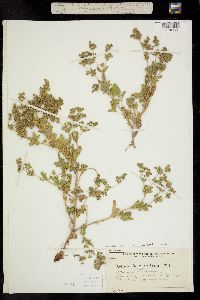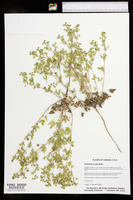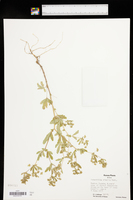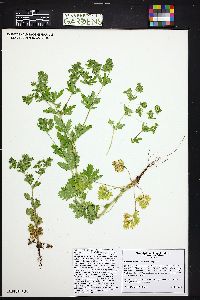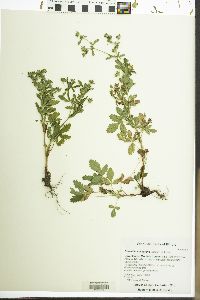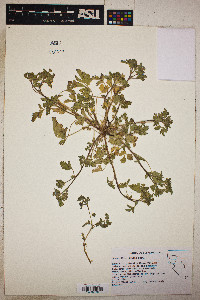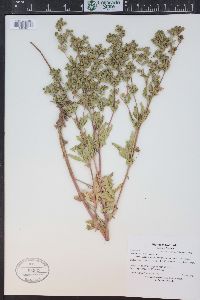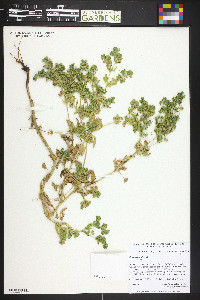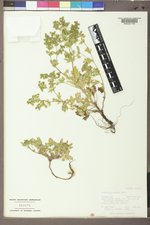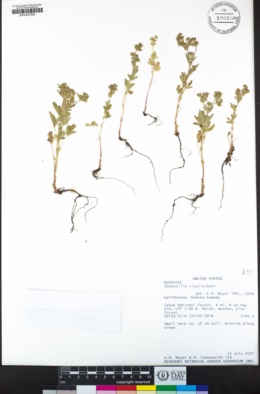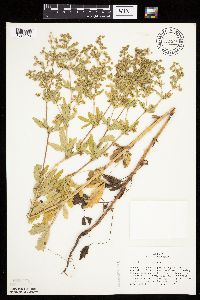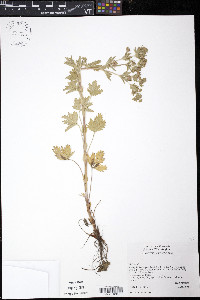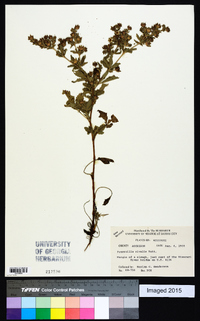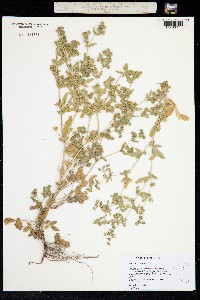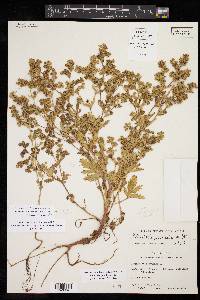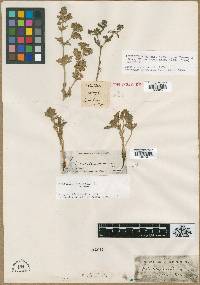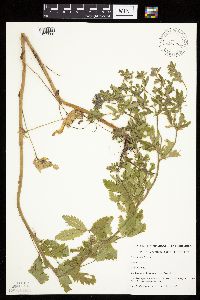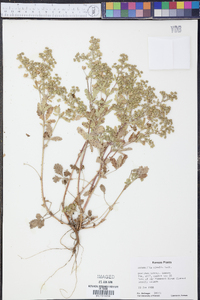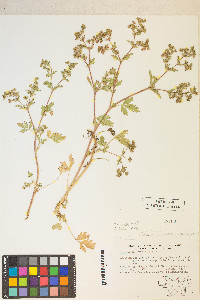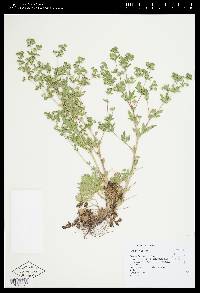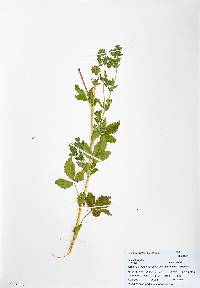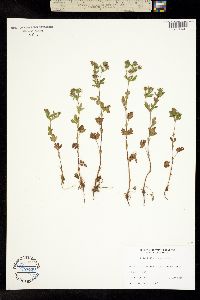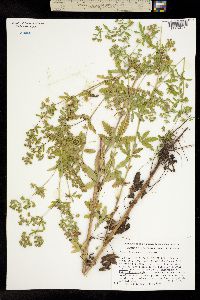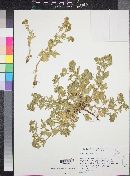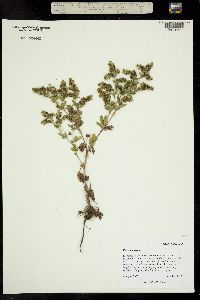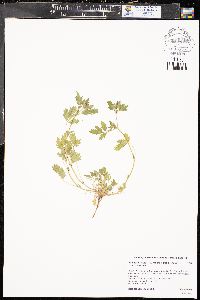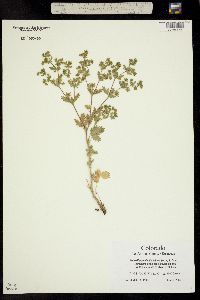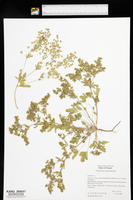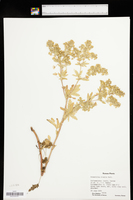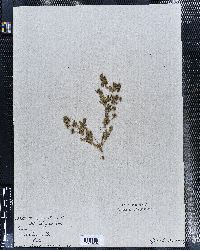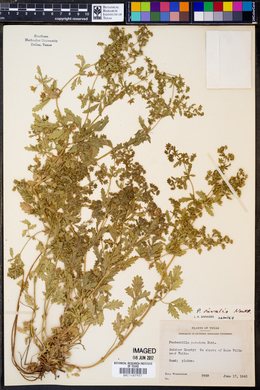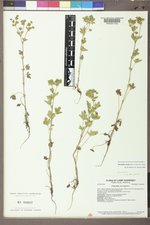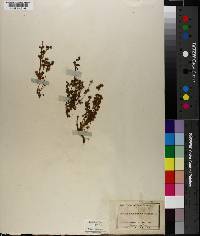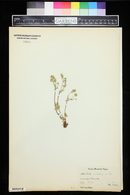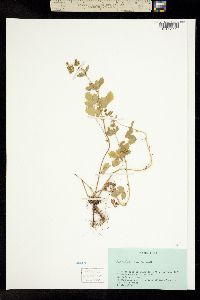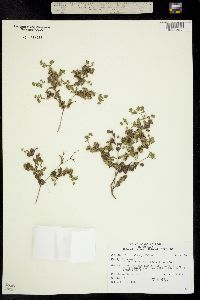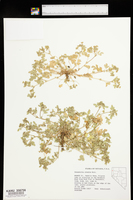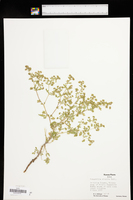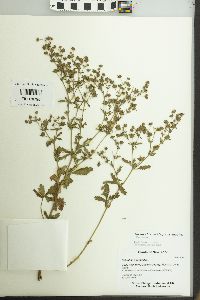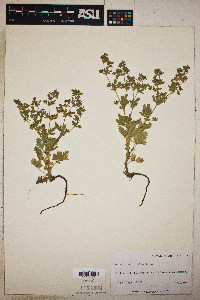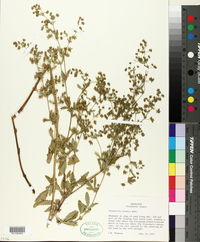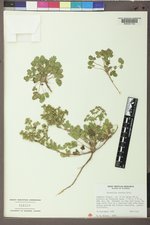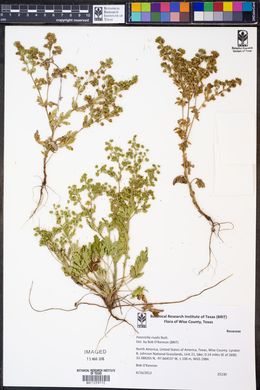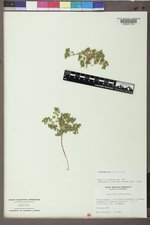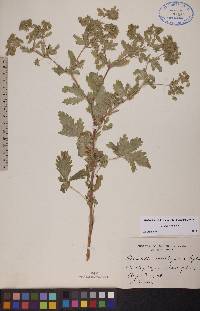
|
|
|
|
Family: Rosaceae
Brook Cinquefoil, more...river cinquefoil
[Potentilla michoacana Rydb., morePotentilla pentandra Engelm. ex Torr. & A.Gray, Potentilla rivalis var. pentandra (Engelm. ex Torr. & A.Gray) S.Watson] |
Potentilla rivalis is an annual or biennial yellow flowered cinquefoil found in moist ground near lakes or streams. It is herbaceous with a terminal style. The leaves are mostly three foliate and there are 10 stamens. The branches are spreading.
Jepson 2012, Kearney and Peebles 1969, McDougal 1973, FNA 2015 Duration: Annual Nativity: Native Lifeform: Forb/Herb General: Herbaceous annuals to biennials, from a taproot, stems decumbent to erect, sometimes prostrate, to 60 cm, slender, simple to branching, herbage softly villous. Leaves: Alternate, short-petiolate, pinnately compound, with stipules; lower leaves with 5-7 leaflets, the upper leaflets often 3-cleft, 2-12 cm long; leaflets obovate or oblanceolate to elliptic, 1-4 cm long, margins coarsely toothed, surfaces villous to glabrate; lower leaves generally withered or fallen by the time the plant flowers. Flowers: Yellow and small but still showy, in leafy, many-flowered cymes; 5 yellow petals, much shorter than the sepals at 2 mm long; 5 green sepals, 3-4 mm long, alternating with 5 oblong bractlets to 4 mm long; stamens 10-15; styles terminal or nearly so, tapered from rough-thickened bases; hypanthium 3 mm broad. Fruits: Achenes to 1 mm long, light brown, and glabrous. Ecology: Found in moist soils near lakes and streams, from 150-7,500 ft (45-2286 m); flowers April-July. Distribution: Illinois to Washington, south to Texas, New Mexico, Arizona, California, and Mexico; and the southern Canadian provinces. Notes: This species is distinguished from other Potentillas by being short-lived, with slender, spreading stems covered with soft, short hairs, and having large, loose, leafy inflorescences with many small yellow flowers, the green sepals longer than the yellow petals, and achenes that are smooth and without protuberences. FNA discusses 3 commonly recognized subspecies, but stops short of upholding them as valid, noting that all 3 forms can be found within some Great Plains populations. Variety rivalis has subpalmately compound (5-foliate) leaves. Variety milligrana, the most common phase, has 3-foliate leaves. Plants with both 3- and 5-foliolate leaves are var. pentandra, which also tends to have five stamens, and is confined to the Great Plains. Var. rivalis and var. milligrana are both considered to be present in Arizona. Ethnobotany: Specific uses for this species are unknown, but other species in the genus have uses. Synonyms: Potentilla leucocarpa, P. millegrana, P. pentandra, P. rivalis var. millegrana, P. rivalis var. pentandra, P. rivalis var. rivalis Editor: LCrumbacher2012, AHazelton 2015 Etymology: Potentilla comes from the Latin diminutive of potens meaning "powerful" in reference to the medicinal properties of some species, and rivalis means growing by streams. Mostly annual or biennial, freely branched, ascending to erect, 4-8 dm, glabrate to softly pubescent, with a diffusely branched leafy infl; lfls 3-5, pinnate or palmate, narrowly obovate-oblong, 2-5 cm, usually blunt, strongly toothed; fls 4-5 mm wide; bractlets and sep subequal, twice as long as the pale yellow pet; stamens 5 or 10; anthers 0.2 mm; style terminal; achenes smooth, 0.7 mm. Streambanks and damp soil; Minn. to Ill., w. to B.C. and Calif., occasionally adventive further e. Summer. (P. millegrana; P. pentandra) Gleason, Henry A. & Cronquist, Arthur J. 1991. Manual of vascular plants of northeastern United States and adjacent Canada. lxxv + 910 pp. ©The New York Botanical Garden. All rights reserved. Used by permission. |
This project was made possible in part by the Institute of Museum and Library Services [MG-70-19-0057-19].
Powered by Symbiota

